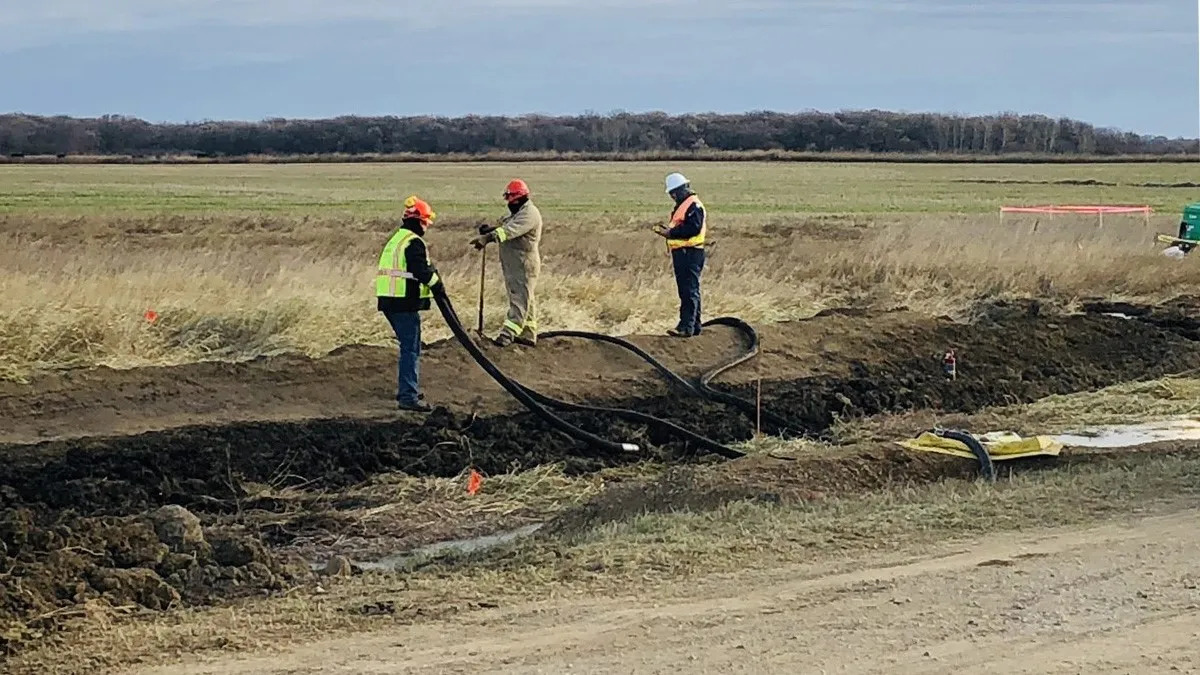A rupture in a section of the Keystone oil pipeline on April 8 has halted the flow of hundreds of thousands of barrels of Canadian crude to U.S. refineries, sparking concerns over rising fuel prices and supply chain impacts.
In Fort Ransom, North Dakota, approximately 147,000 gallons of oil spilled into an agricultural field. “Our primary focus right now is the safety of onsite personnel and mitigating risk to the environment,” officials from South Bow, the pipeline’s operator and successor to TC Energy’s liquids division, commented, noting the pipeline segment was isolated and response crews were mobilized immediately.
The Keystone pipeline system runs more than 2,600 miles from the oil sands of Alberta, Canada, to refineries on the U.S. Gulf Coast. It transported an average of 624,000 barrels per day in 2024, according to data from the Canada Energy Regulator.
A Disruption to Crude Supply
While the rupture is expected to be contained, energy markets could feel the impact quickly, especially if the shutdown is prolonged.
Dr. Ramanan Krishnamoorti, Vice President for Energy and Innovation at the University of Houston, believes the effects of Keystone’s shutdown will be immediate, “it could raise prices at the pump within one or two days, but it will have a greater impact on diesel and jet fuel,” Krishnamoorti said. “The Keystone pipeline transports a large amount of a unique, heavy crude that only is available from limited sources.”
Refineries rely on precise crude blends to maintain consistent output of fuels, and disruptions to that balance can cause a domino effect throughout the entire supply chain. “The refineries run on blends of crude so that they can get the product line that they want to deliver, whether it is gasoline, diesel, jet fuel, etc., and not having the supply of heavy crude is going to tilt their ability to make diesel and jet fuel,” he explained. “They will make less of diesel and jet fuel when they have less heavy crude.”
Krishnamoorti also noted that elevated diesel costs could have downstream effects on consumers. “Higher diesel costs could lead to grocery price increases because diesel trucks transport those products.”
However, not all energy experts see the shutdown as a major concern. Ed Hirs, an energy economist and author at the University of Houston, emphasized the market’s resilience.
“Keystone is just one of the avenues for the oil to get across the border,” Hirs said.
Hirs explained that even if the pipeline’s outage were to stretch over a longer period, other transport methods are available to ensure Canadian crude reaches U.S. markets.
“If the shutdown continues for an extended period of time, it might cause a little ripple in the market, but we have a number of ways of getting that oil across the border,” Hirs continued. “Enbridge has a couple of pipelines, and we can very easily load up some rail cars with some Canadian crude and bring it down. It might cause an issue in a couple of local markets, but it shouldn’t be a lasting issue.”
Response and Environmental Measures
The pipeline rupture was discovered after a nearby landowner heard a “mechanical bang” and observed the spill. A worker manually shut down the affected segment within two minutes, according to Bill Suess of the North Dakota Department of Environmental Quality.
No structures or homes were threatened, and while a small stream was nearby, it only
flows seasonally and was not impacted. As a precaution, authorities used absorbent
materials and barriers to prevent the oil from migrating further.
The U.S. Pipeline and Hazardous Materials Safety Administration (PHMSA) has launched
an investigation, and South Bow has begun cleanup operations under the supervision
of state and federal agencies.
Past Incidents and Future Outlook
The Keystone pipeline has faced scrutiny in the past due to a series of spills, including a significant rupture in Kansas in 2022 that released nearly 13,000 barrels of oil into a creek.
Despite the current outage, some analysts believe that short-term fuel availability won’t be significantly affected. Refineries typically maintain several days’ worth of crude in reserve.
“Even if the pipeline gets cut off completely for, say, two or three weeks, they have enough crude to continue refining for gasoline,” said Mark LaCour, editor-in-chief of the Oil and Gas Global Network.
Still, energy leaders are monitoring the situation closely as markets remain sensitive to disruptions.
